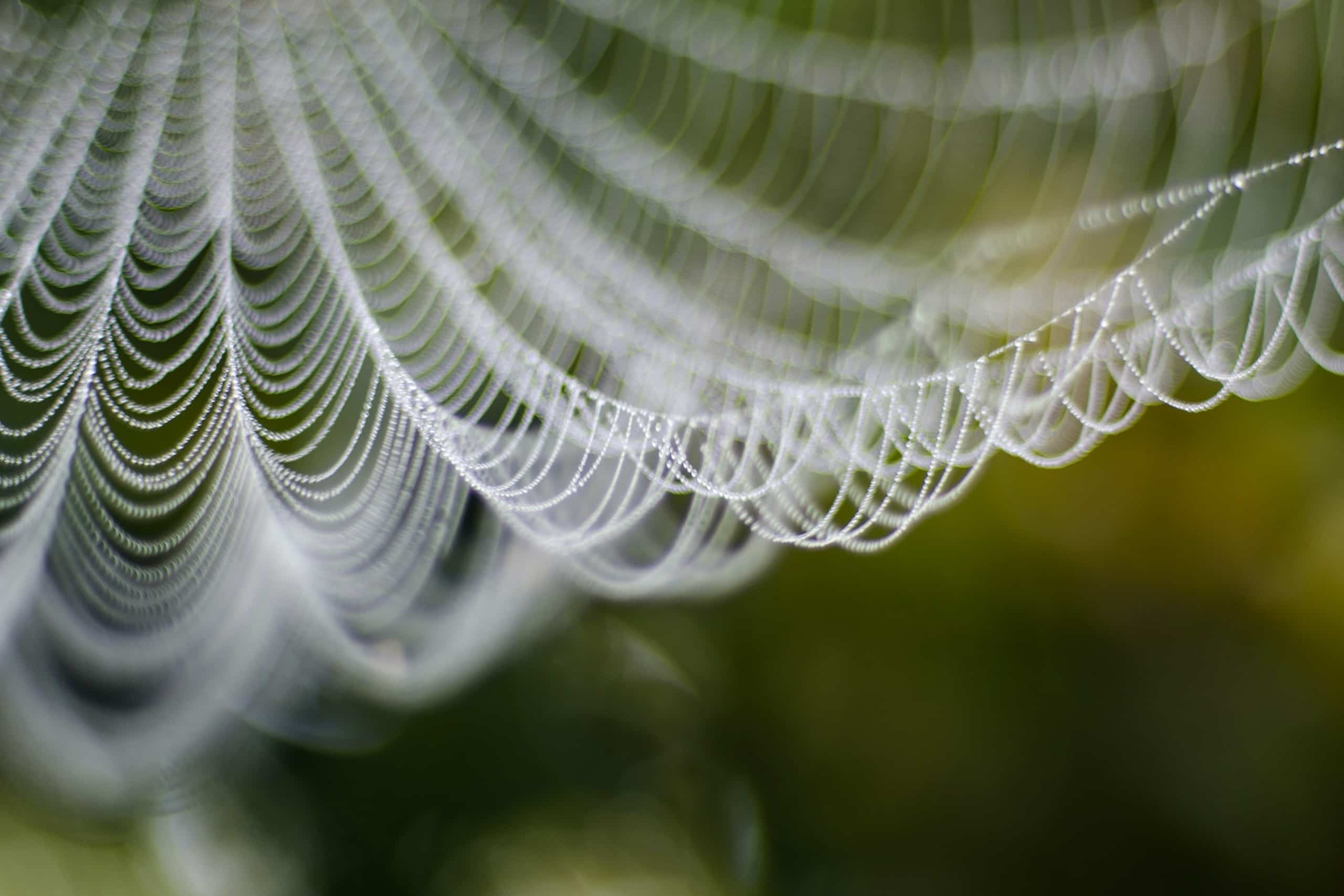Many of us love a good scare this time of year. And yet there is a common Halloween decoration that is in fact very real and provides a good scare for lots of homeowners year-round.
We’re talking, of course, about the spider. So many people get squeamish around these eight-legged critters, and they do look quite creepy. And, if the conditions are right, they can invade your home or yard and make for quite an annoyance.
The good news is that, by and large, most common Georgia spiders are harmless to humans and will avoid contact with us if at all possible. And, actually, they provide a wonderful service by thinning the insect population. However, there are also signs of infestation and species to be aware and careful of. So, let’s take a look at some of the most common spider species in our great state and dissect what their appearance means for you and your family.
Common spiders in Georgia
First off, there is no need to panic when you see a spider. Invariably, most spiders you see in our state will be harmless to you – with two exceptions (the black widow and brown recluse). And, of the 38 known species of spiders in Georgia, only the two previously mentioned species are harmful to humans. And, yes, that includes the latest invasive spider that is quickly making Georgia its home.
So, let’s start with that previously foreign species; one that has both captured headlines and the attention of the public since its first acknowledged appearance six years ago.
East Asian Joro
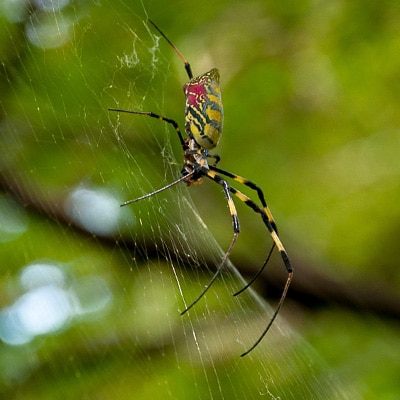 It’s hard not to notice the East Asian Joro spider, as it looks like a perfect Halloween horror creature. It’s fairly new to Georgia but it has become a staple to our state’s spider collection.
It’s hard not to notice the East Asian Joro spider, as it looks like a perfect Halloween horror creature. It’s fairly new to Georgia but it has become a staple to our state’s spider collection.
HOW TO IDENTIFY:
First off, it’s huge compared to most native spiders, with the females, including their leg span, reaching up to 3 to 4 inches in length. It’s also brightly colored, with the females exhibiting neon yellow and blood red patterns on their abdomens – offset by jet black coloration on much of the rest of their bodies, though they also have yellow-orange stripes on their legs and some bluish-green coloration on their backs. In short, it looks like the common garden spider on steroids. (Although, sorry to say, guys, that the male species of the version is dull as dishwater, being much smaller and solid brown in coloration.)
WHERE IT LIVES:
Beyond its appearance, the Joro’s lifestyle has also made an impression, as this spider – which is native to Japan, Korea, China and Taiwan – spins enormous, multi-layered webs of gold-colored silk. Also, groups of females often live together in huge web constructions that can often be seen in trees, power lines and, possibly your yard – though the Joro often prefers to spin its webs higher in the air than the common garden spider. If you’ve seen one of these constructions, it’s obvious and hard to forget.
WHAT IT EATS:
(We will only include this for this spider, since it is a new species to our area and want to clear up any confusion.) The Joro is not some mythical monster here to devour your pets or carry away your young. Like most spiders, it eats mostly insects. In fact, it seems to be feasting on stinkbugs, and may be making a significant dent in that population. It is also eaten by birds and mud daubers.
CONCERN LEVEL: LOW
And its bite is not anything to be overly concerned about – about the same as a bee sting. Yes, it is venomous – like all spiders – but any comparisons to the black widow are way off base. In fact, despite its size, it is a relatively timid critter and would rather avoid human confrontation if at all possible.
However, thanks to its massive webs and penchant for living in groups, that is proving difficult. And after first appearing in northeast Georgia, along the I-85 corridor, it is quickly spreading throughout the area – hatchlings use the ballooning technique, spinning a big web that catches the air and allows them to ride current for up to 50-100 miles. It is a species here to stay, but there’s no reason to panic, and, should they invade your backyard, you can easily remedy the situation yourself or with a quick call to a local pest-control company.
Request a Free Quote
Zone Home Solutions has five locations around the Atlanta area. Contact us to get a free, no obligation project quote.
Black Widows (southern and northern)
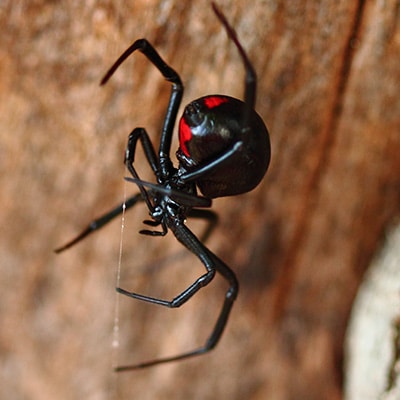 There is a good chance you know all about this spider – and to be wary of it. That is because its venom is very strong and can cause fever, elevated blood pressure, nausea, and sweats. However, DO NOT PANIC, even if bitten by a widow, for there has not been a black widow related death in the United States in over 10 years. That said, anyone bitten by a black widow should seek medical treatment immediately.
There is a good chance you know all about this spider – and to be wary of it. That is because its venom is very strong and can cause fever, elevated blood pressure, nausea, and sweats. However, DO NOT PANIC, even if bitten by a widow, for there has not been a black widow related death in the United States in over 10 years. That said, anyone bitten by a black widow should seek medical treatment immediately.
There are also two types of widows in our state, southern and northern.
HOW TO IDENTIFY:
Both the southern and northern female black widow (which is the sex to be concerned with, as males do not possess the jaw strength to bite through human skin) will reach about an inch-and-a-half in total length (legs and body). The SOUTHERN widow is entirely black, save for telltale red hourglass markings on its belly and a red dot on its backside. The NORTHERN widow is also entirely black. However, instead of an hourglass shape, it has two red, unconnected, triangles on its belly.
WHERE IT LIVES:
Black widows are most often found around woodpiles and other places where they feel undisturbed, such as eaves, empty boxes, and even shoes that are stored away and never worn. All species of widows build oddly shaped webs that appear as disorderly patches placed in corners or other edges.
CONCERN LEVEL: HIGH
If you encounter a black widow, do not attempt to touch it. Females widows can be aggressive, especially when they are guarding egg sacs, so you will need to utilize gloves and insecticide when attempting to destroy them. We would recommend calling a professional (that’s us ;)).
Brown recluse
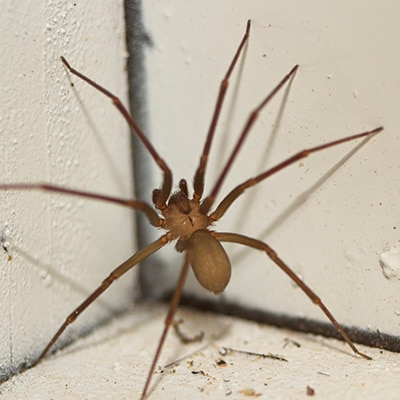 This is another spider that you’ve surely heard a lot about due to its venomous reputation. However, they are not the killers they are often made out to be and are actually very reticent to bite, only doing so if they are defending themselves – usually from someone unwittingly pressing against it. Certainly, you want to avoid a brown recluse bite if at all possible, however, as they can inject a cytotoxin into your skin, which breaks down the tissue around the bite. These bites are very painful and can leave an open, ulcerating sore that must be treated by a medical professional. Other cytotoxin symptoms include fever, restlessness, and difficulty sleeping.
This is another spider that you’ve surely heard a lot about due to its venomous reputation. However, they are not the killers they are often made out to be and are actually very reticent to bite, only doing so if they are defending themselves – usually from someone unwittingly pressing against it. Certainly, you want to avoid a brown recluse bite if at all possible, however, as they can inject a cytotoxin into your skin, which breaks down the tissue around the bite. These bites are very painful and can leave an open, ulcerating sore that must be treated by a medical professional. Other cytotoxin symptoms include fever, restlessness, and difficulty sleeping.
HOW TO IDENTIFY:
Small in nature, the recluse is usually not much bigger than a quarter (adults grow to about one-and-a-half inches across, including legs and body) and are light to dark brown in color (though they can have a gray shade as well). Their signature is a dark brown violin shape on the back. They have no other distinctive colorations or markings, though they have three very obvious and separate pairs of eyes (six total) – two in the middle and two on each side. Brown Recluse is often misidentified and that it takes a professional with a microscope to make a positive ID.
WHERE IT LIVES:
The recluse pretty much keeps to the area in which it was born throughout its life cycle (thus its name). It does not spin much of a web, as it hunts around at night, and they can be found outside in woodpiles, or inside in dark quiet places – like under furniture or in closets, attics and crawlspaces.
CONCERN LEVEL: HIGH
If you encounter a brown recluse, do not attempt to touch it. It is not an aggressive species, but you will need to utilize gloves and insecticide when attempting to destroy them.
Brown widow

Another invasive species, this version of the widow family is actually less venomous than its black cousins. However, its bite can still cause strong symptoms, so it bears being wary of. Originally from Africa, where it is called the button spider, it is actually pushing some black widows out of their natural habitat.
HOW TO IDENTIFY:
Like its southern black widow cousins, the Brown Widow has a characteristic hourglass shape on its belly. However, the brown widow’s hourglass shape is usually orange or light red instead of a blood red. Its legs are light brown with several black rings around them. Female brown widows grow to a size of around two inches (bod
y and legs included), while the male is generally smaller than the female.
WHERE IT LIVES:
Just like their cousins, the brown widow prefers to stay out of sight, sticking to darker, undisturbed places, such as woodpiles, eaves, boxes, etc. Like other widow spiders, the brown widow spins erratic and tangled-looking webs. The spider often hangs upside down in the center of the web, making it easy to see the telltale hourglass shape on its abdomen.
CONCERN LEVEL: MEDIUM
Avoid touching any widow of any type, using gloves and insecticide to eradicate it, as the brown widow will defend itself or its egg sac. Brown widow bites are still rare, as the spider prefers to run away from humans rather than attack them. And the bite of a brown widow is less severe than the bite of a black widow. If you have been bitten and you feel a strong pain, muscle cramps or nauseous, head to the nearest hospital immediately.
Common house spider
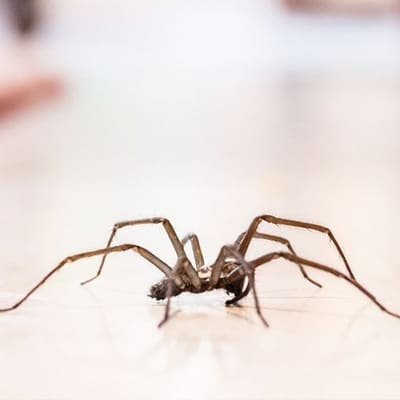 More than likely, this is the spider you’ll encounter the most in your home. However, the amounts of spiders found indoors is also changing due to the fact that southern spiders prefer some amount of humidity in the air, and widespread use of HVAC systems takes much of the humidity out of the air inside your home. Other than making you jump when you first see it, this spider is pretty much harmless.
More than likely, this is the spider you’ll encounter the most in your home. However, the amounts of spiders found indoors is also changing due to the fact that southern spiders prefer some amount of humidity in the air, and widespread use of HVAC systems takes much of the humidity out of the air inside your home. Other than making you jump when you first see it, this spider is pretty much harmless.
HOW TO IDENTIFY:
Varying in color – most are yellow to brown – these spiders have elongated abdomens and can be mistaken for a brown recluse. However, it does not have that violin shape on its back. Unlike the recluse its abdomen is also covered with fine hairs.
WHERE IT LIVES:
They are usually found in ceiling corners or under furniture, as well as inside closets, basements, garages, and crawlspaces. Outdoors, you can find them around windows, under eaves, and near light sources that attract the insects they eat.
CONCERN LEVEL: LOW
The worst threat these spiders can pose is as a nuisance. They don’t pose any threat to humans, as their venom is very, very mild.
Wolf spider
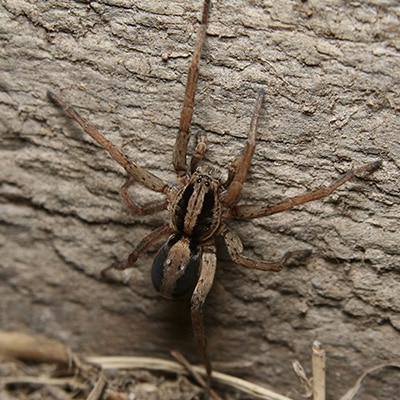 This is another creature that looks straight out of central casting for “monster.” But, other than a grizzly appearance, this arachnid is mostly harmless. We say mostly, as a wolf spider bite does hurt (they have impressive jaws), but it probably won’t leave you with anything more than a skin welt for a few days.
This is another creature that looks straight out of central casting for “monster.” But, other than a grizzly appearance, this arachnid is mostly harmless. We say mostly, as a wolf spider bite does hurt (they have impressive jaws), but it probably won’t leave you with anything more than a skin welt for a few days.
HOW TO IDENTIFY:
Their sizes vary from just 3/8 of an inch to three inches across. Thickset with long legs, wolf spiders are typically dark brown in color with pale markings or stripes. Their bodies are like they are for a specific reason – wolf spiders don’t spin webs to catch prey (though they can spin webs). Rather, it chases its food down on foot; so, it is a very fast spider. Most wolf spiders also have hair on their bodies
WHERE IT LIVES:
The like outdoor wood piles (yes, this is a broken record – the upshot being that you should always be careful when retrieving firewood) leaves, yard debris, and the underside of stones, so that they may hide during the day before coming out to hunt at night.
CONCERN LEVEL: LOW
Wolf spider bites are rare and, while they may enter your home in search of a mate or prey, that is extremely rare.
Crevice spiders (also known as the Southern House Spider)
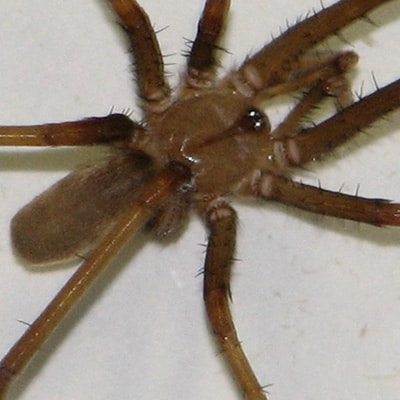 Another brown spider that can be mistaken for the brown recluse, this is another harmless arachnid that only rarely bites humans – and when it does, it is not significant. These spiders love common household pests like flies, roaches and wasps.
Another brown spider that can be mistaken for the brown recluse, this is another harmless arachnid that only rarely bites humans – and when it does, it is not significant. These spiders love common household pests like flies, roaches and wasps.
HOW TO IDENTIFY:
Similar in shape and size to the recluse, crevice spiders DO NOT have the telltale violin shape on their backs. They are light to dark brown and grow to about one to one-and-a-half inches across (legs and body included).
WHERE IT LIVES:
It came by its name for a reason, often living in baseboard and ceiling corners and crevices indoors. However, it will try to stay out of sight the best it can.
CONCERN LEVEL: LOW
Like all spiders, it can and will bite if cornered or protecting itself. However, that is rare, and its venom is in no way a threat to humans.
Yellow garden spider
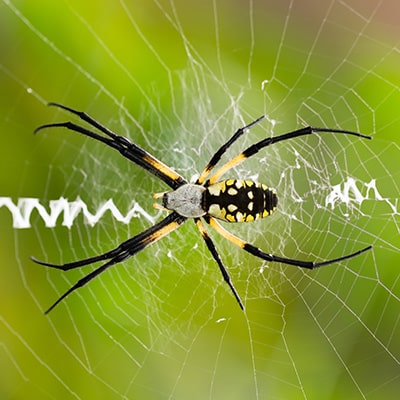 Before the Joro spider showed up and grabbed our attention, this was the flashiest outdoor spider you’d see in Georgia. However, these arachnids are still impressive, though they seem to be less prevalent than in years past. And with them competing for space with the Joro, one wonders if their numbers have been affected by the invasive species.
Before the Joro spider showed up and grabbed our attention, this was the flashiest outdoor spider you’d see in Georgia. However, these arachnids are still impressive, though they seem to be less prevalent than in years past. And with them competing for space with the Joro, one wonders if their numbers have been affected by the invasive species.
HOW TO IDENTIFY:
Large – adult females grow to three inches or larger (body and legs included) – and brightly colored, garden spiders are hard to miss. Females are black with bright yellow patches on their abdomens, while, once again, the male of the species is smaller and less colorful.
WHERE IT LIVES:
They are love outdoor, sunny areas full of plants on which they can anchor their webs. Speaking of which, their webs are impressive, consisting of large circular patterns with a thick zigzag pattern in the middle of the web – a construction thought to make the spider look bigger and thus scare off predators. And those webs snare all kinds of annoying, flying insects.
CONCERN LEVEL: LOW
They are not dangerous to humans, and their bite would only yield some mild, localized pain and, possibly, some itchiness and swelling.
Orb weaver spider
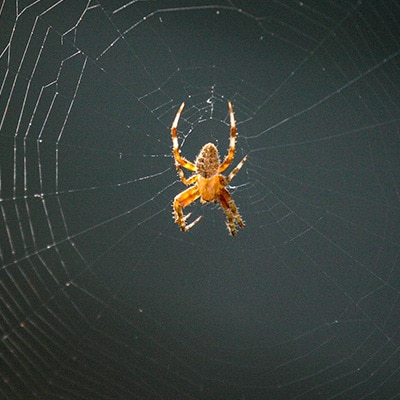 This is another species that can be mistaken for the brown recluse but is actually fairly harmless.
This is another species that can be mistaken for the brown recluse but is actually fairly harmless.
HOW TO IDENTIFY:
These types of spiders come in several different colors, some of which are very bright, and they have hairy or spiny legs and a relatively large abdomen. They grow to a size of about one inch across (legs and body included). They are also mainly nocturnal.
WHERE IT LIVES:
These spiders are known for their distinctive sheet webs – that can stretch up to three feet in diameter and feature an escape tunnel at the rear. The orb weaver does web construction and repair work and at night.
CONCERN LEVEL: LOW
They will bite if cornered, but the orb weaver’s bite is only comparable to a bee sting, and they are not a threat to humans.
Jumping spider
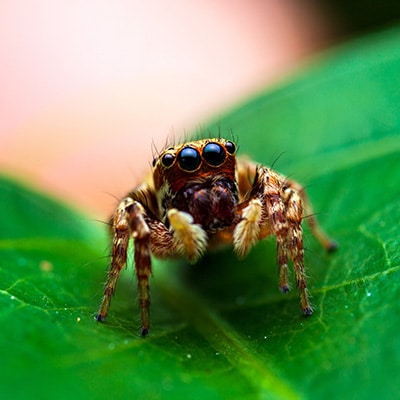 This covers a range of different species, including the magnolia green jumping spider, the dimorphic jumping spider, the gray wall jumper, regal jumping spider, daring jumping spider and zebra spider. Most of these are rarely found indoors, and all of them are relatively harmless.
This covers a range of different species, including the magnolia green jumping spider, the dimorphic jumping spider, the gray wall jumper, regal jumping spider, daring jumping spider and zebra spider. Most of these are rarely found indoors, and all of them are relatively harmless.
HOW TO IDENTIFY:
Each has a unique look. The magnolia green is bright green, matching the leaves on which it lives. The dimorphic is dark gray or black with bright white legs. The gray wall jumper is a mottled gray with lighter and darker patches, along with grayish hairs all over its body. The regal jumping spider has three different appearances, with males being black with white bands around their legs and females being either gray with black bands on their legs or orange body with gray/brown legs. The daring jumping spider is black with three orange/white spots on its abdomen (young spiders’ spots are orange, turning white as they mature). Meanwhile, the zebra spider is black with tiny white hairs appearing as white stripes on the body.
They are all very quick in movement and are able to jump large distances to capture their prey.
WHERE IT LIVES:
They prefer to live outdoors, where they can run and pounce on their prey. They do not spin webs to trap pray or live in – though they may utilize a thread of silk to help them on extra-long jumps.
CONCERN LEVEL: LOW
All jumping spiders will bite if on the defensive, but they are fast and evasive and will do everything they can to get away. They do not pose a significant threat to humans, with most of these species’ bite being less painful than a bee sting. However, the daring jumping spider’s bite is a little stronger and can cause some swelling, and there have been cases of its bite causing headache, fever, chills and nausea.
Trapdoor spider
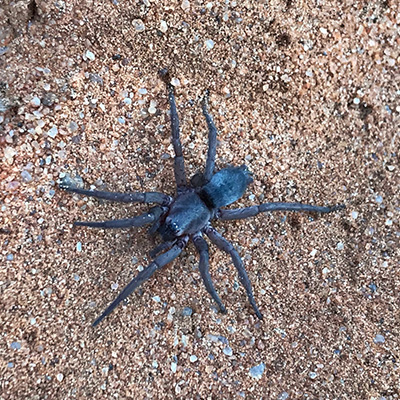 This spider has powerful jaws and fangs but is still not dangerous to humans – only to the insects and small lizards, etc., that it eats. Despite looking like the Australian funnel-web spider – one of the most dangerous spiders in the world – it is quite harmless to us.
This spider has powerful jaws and fangs but is still not dangerous to humans – only to the insects and small lizards, etc., that it eats. Despite looking like the Australian funnel-web spider – one of the most dangerous spiders in the world – it is quite harmless to us.
HOW TO IDENTIFY:
This large-ish spider (adults measure from one to one-and-a-half inches) can range in color from dark brown to reddish brown and has a shiny and sleek cephalothorax (upper part of the body) and hairy abdomen.
WHERE IT LIVES:
This spider gets its name from the burrows it constructs, complete with a cork-like trapdoor made of soil, vegetation and silk. The trapdoor spider spends most of its life underground and usually hunts at night.
CONCERN LEVEL: LOW
Trapdoor spiders are not aggressive and will almost always look to run away. Like all spiders, it can bite, but this is extraordinarily rare, and, if it does bite, the result is not even as strong as a bee sting.
Grandaddy longlegs
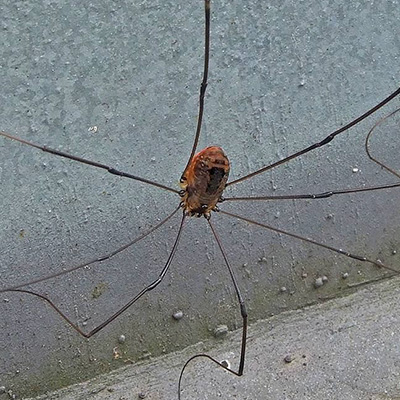 Let’s get this out of the way, contrary to some urban legends, grandaddy long legs are not some super venomous spider that cannot bite you. In fact, they can bite, but it is so rare as to be almost unheard of. And if they do bite, it will not leave anything more than the faintest of red spots, as they are not venomous.
Let’s get this out of the way, contrary to some urban legends, grandaddy long legs are not some super venomous spider that cannot bite you. In fact, they can bite, but it is so rare as to be almost unheard of. And if they do bite, it will not leave anything more than the faintest of red spots, as they are not venomous.
The funny thing is that granddaddy longlegs are not even spiders; they belong to a group of arachnids known as harvesters or harvestmen, so named because they are most often seen around harvest time.
HOW TO IDENTIFY:
Longlegs are one of the most identifiable arachnids in Georgia thanks to those long legs (reaching up to 2-3 inches in length) and a tiny cephalothorax. They use those extremely long legs to catch their prey rather than building webs.
WHERE IT LIVES:
They stay on the ground, where they can track down their prey.
CONCERN LEVEL: NONE
Granddaddy longlegs are not poisonous or venomous and do not pose any threat to humans.
The bottom line is that, by and large, spiders want to stay away from you and just eat insects and reproduce. They are not out to get you – even during Halloween. However, they can still intrude on your home or yard. The best way to prevent spiders from entering your home is to minimize the spaces they can hide. Keep your garage, attic, and basement clear and clean and uncluttered and sweep away cobwebs. Try not to leave shoes and clothing on the floor. Seal cracks and crevices around your home. And consider enclosing your crawlspace.
Spiders are more common in the fall and winter as they make their way indoors in search of food and warmth.
If you suspect you have a spider problem, contact a professional pest control company who can help identify the type of spiders you have and provide you with a thorough evaluation and treatment and prevention plan.
Zone Pest Solutions is ready and available to help you any time you need us. Please call today and let us solve your eight-legged problems.
